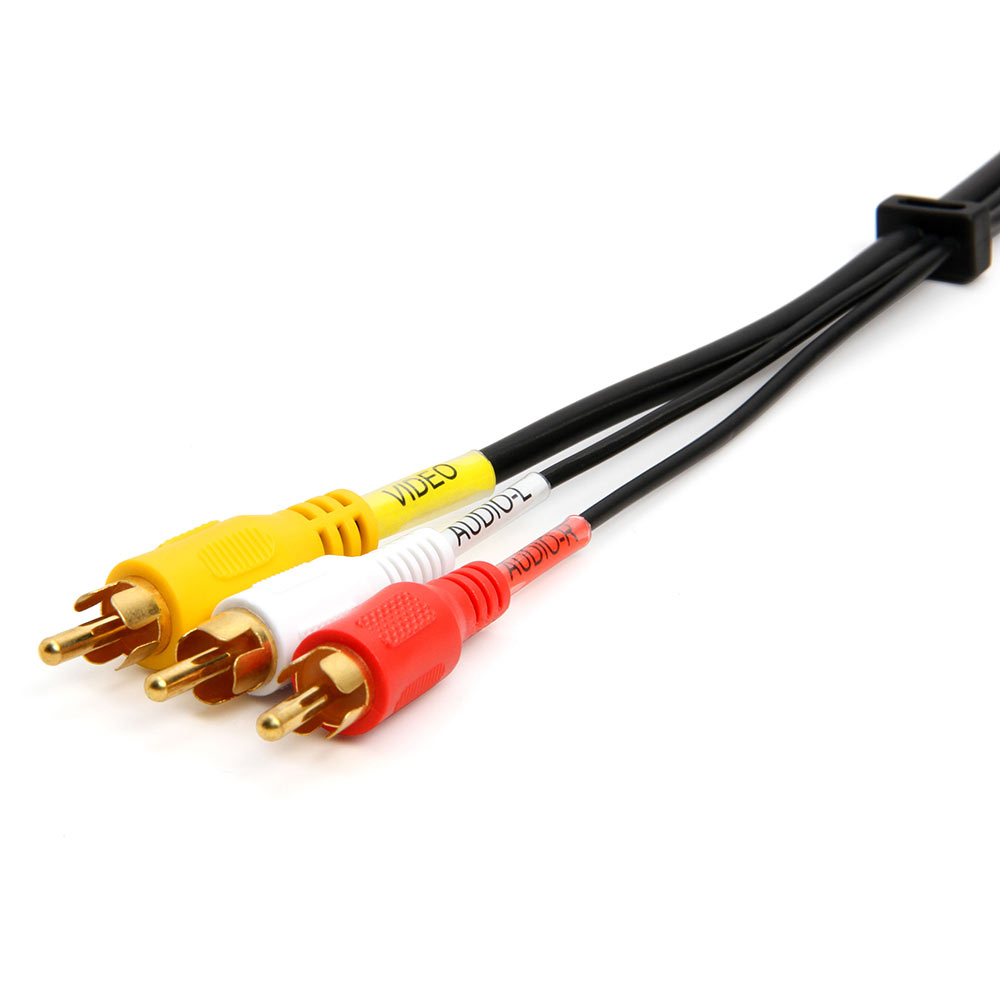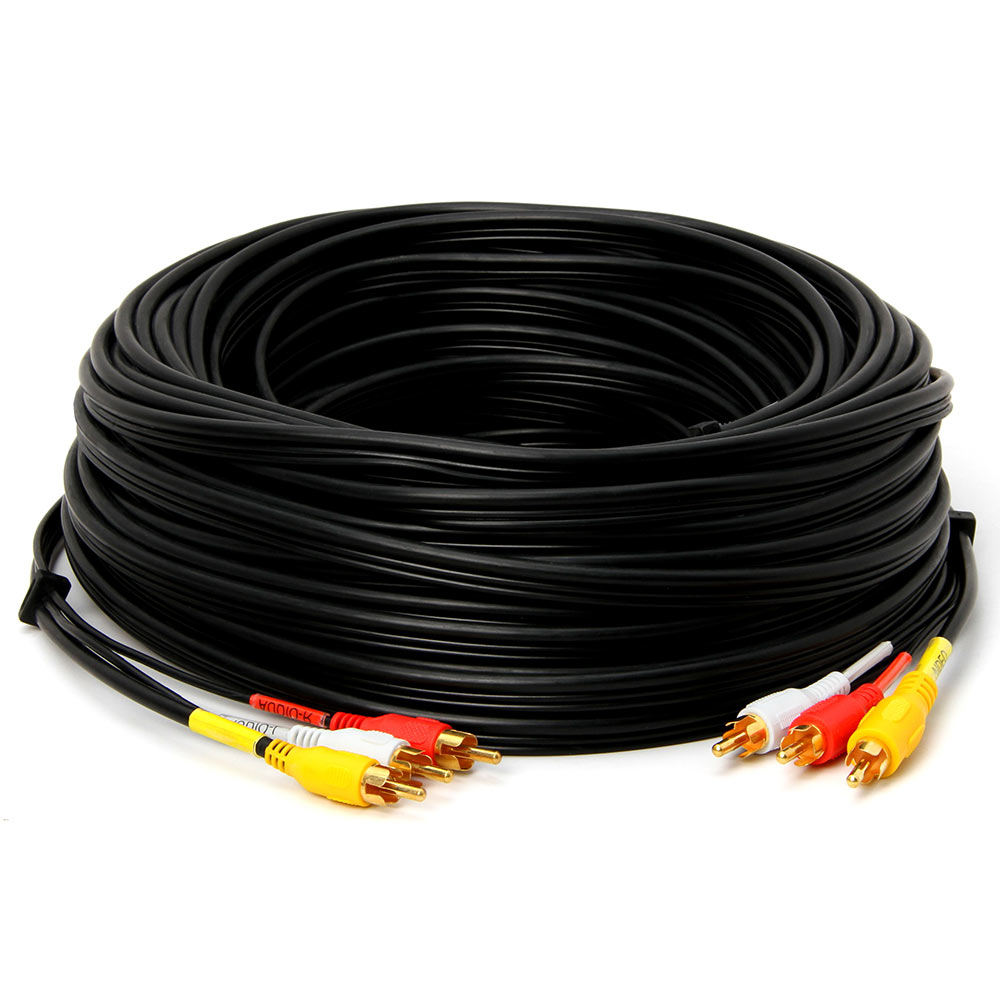The Attributes of Composite Video Cables
There are a plethora of video equipment such as TVs, gaming consoles, cameras, computers that are used to download and transmit video signals, and DVD players. Each of these can be connected to a TV or output screen to ensure that you can view the visuals. While newer HDTVS require component cables to transmit the video signals, older TVs and video display units use composite video cables. These cables transmit a composite video signal or standard definition signals. As such composite video cables are standard definition cables.
What You May Need
However, most composite video cables come with three RCA plugs on each side. These are the yellow plug for the video signal and the black or white and red plug for the two audio signals – left and right. These cables too transmit video signals TVs. However, they cannot transmit the high definition signals needed for HDTVs. Before you purchase a cable, you need to check the devices you are connecting to determine if you need composite video cables or component video cables. Even if you have an HDTV, if the source device for the signals does not support high definition signals but provides standard definition signals you need composite video cables. For ease of use, most composite video cables have a yellow plug on both sides. This has to be plugged to the video jack while the two audio plugs have to be inserted into the audio jacks. For commercial use, the composite video cable uses BNC connectors that reduce distortion further.
As a rule, you need to check the length, impedance, and distortion or electrical shield of the composite video cable before making a purchase.
Which System?
Composite video cables carry all the information required to form the image in a single cable. This means they carry the information regarding the color of the picture as well as the line and frame synchronization information. The hue, luminance, and saturation information are all coded differently depending on whether the NTSC, PAL, or SECAM system is used. However, the composite video cables can transmit the signals whichever coding system is used.
Lengths Available
When purchasing composite video cables, you need to first determine the length of cable needed. This is because unnecessarily longer cables not only cost more but lead to clutter. They can also lead to distortion of signals. Instead, you should determine the placing of the various components of your home theater or entertainment unit and then purchase the composite video cables you need. The composite video cables are available in lengths ranging from three feet to 100 feet.
Apart from the length of the cables, you also need to check the contacts of the cable. Gold contacts are the preferred standard when it comes to composite video cables as they provide superior performance.
Proper Shielding
Additionally, you need to ensure that the composite video cables are shielded to prevent EMI/RFI interference. This shielding will ensure that there is no distortion of video and audio even when there are electrical signals and noise in the room where the cable is used. In general, aluminum shields used to protect the center copper conductor are effective in minimizing or doing away with electrical interference. High quality composite video cables have solid copper center conductors. These will enable smooth and easy transmission of the signals. The speed of the transmission is not a critical factor when choosing the video cables. Instead, you need to ensure that the copper centers permit uninterrupted transmission.
Audio Included
Depending on the use, you can either purchase composite video cables with just a single cable for connecting videos or cables with additional connectivity to transmit audio signals in stereo as well. The video cables are available in both models and you can choose the most appropriate one for your needs. If you are connecting DVD players to your TV you need to select a composite cable that also transmits audio. This will ensure that the audio and video signals are played simultaneously, enhancing viewing pleasure.
Good quality composite video cables have fully molded color coordinated gold coated connectors and flexible black PVC jackets. These features help in ease of use and in also protecting the cable from damage or interference. There are a variety of composite video cables. The ones with a single RCA plug can also be labeled subwoofer, digital coax, S, or PDIF Patch cables. On the other hand the cables with three RCA plugs are typically labeled AV or video audio cables.
When purchasing composite video cables you need to be sure that they will meet your requirements. As these cables only transmit standard definition signals they are best used when the source provides only standard definition signals. They can also be used if the display device is capable of using only standard definition signals. On the other hand if both the source and display units can support high definition signals you need to use component video cables.
The Right Jacks
In spite of the fact that there are a variety of HDTVs in use many of the source video content is often in standard definition. This can include older movie DVDs, gaming software, and home videos. All the devices such as digital cameras and DVD players can be connected to the HDTV or standard TV using composite video cables without any loss of picture quality. While standard definition TVS will only have jacks to accommodate composite video cables, HDTVs typically have jacks to accommodate both component video cables and composite video cables. As such when you are connecting a device to a HDTV using a composite video cable you need to ensure that the RCA plug is inserted into the correct jack. This will ensure that the TV is not damaged.
Composite video cables are a great alternative to component video cables when the source or display device does not support high definition signals. The picture quality will not be distorted if you ensure that the impedance is at the correct range, the center conducting material is copper, and that it has a shield for electrical disturbance.





